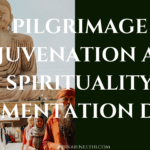The article will focus on the Heritage City Development and Augmentation Yojana (HRIDAY). HRIDAY is an initiative by the Indian Government which was launched in 2015. It was aimed to bring together urban planning, economic growth, and heritage conservation with the objective to preserve heritage sites in India, and also to promote tourism in these sites.
The HRIDAY was announced on January 21st, 2015 by Prime Minister Narendra Modi. The initiative is a part of the National Heritage City Development and Augmentation Yojana which was launched by Modi back in 2014. The main objective of this program is to develop a list of cities that have a lot of historical significance, and then to augment their tourism potential so that they can be used as tourist destinations for international travelers.
Cities need to be able to meet a wide range of qualifications in order to qualify for the program.
Table of Contents
Introduction: Heritage cities and their history in India
The term “heritage city” is often used to describe a city with an old, historic, and attractive urban fabric. They are usually characterized by their high level of preservation of historic buildings and their rich cultural heritage.
There are many cities in India that qualify as heritage cities. Under this HRIDAY Scheme, twelve cities namely, Ajmer, Amritsar, Amaravati, Badami, Dwarka, Gaya, Kanchipuram, Mathura, Puri, Varanasi Velankanni, Warangal have been identified for development. The mission period of HRIDAY scheme ended on 31st March 2019.
The scheme involved the development of civic infrastructures like drainage, road, footpath, sanitation, tourist conveniences around regional and cultural assets around heritage sites
Importance of heritage cities for socio-economic development in India
We live in a world where heritage cities are an important part of the socio-economic development of a country. In India, there are many heritage cities that have been developed by the government with the primary intention to revive their economic growth.
The main objective of a heritage city is to revive its past glory and develop it as a tourist destination with an emphasis on preservation and sustainable development. Heritage cities have become more popular in recent years because they have been found to be economically beneficial for the country.
What is the Heritage City Development and Augmentation Yojana (HRIDAY)? Key Features, Benefits of the Scheme
HRIDAY is a scheme launched by the Government of India for developing heritage cities. The scheme has been launched with the objective to provide better living standards for all sections of society living in these cities. It will also help in preserving and promoting our rich cultural heritage.
The key features of HRIDAY are:
– The scheme will be implemented by the Ministry of Tourism and Culture, Government of India.
– HRIDAY will be implemented through public-private partnerships (PPP) at the Central, State, and District levels with participation from local governments, private sector companies, civil society organizations (CSOs), non-governmental organizations (NGOs), and other stakeholders.
– HRIDAY focuses on tourism infrastructure development; heritage conservation; promotion & marketing; capacity building; livelihood
What is the Duration of the scheme?
HRIDAY organizes its efforts in areas including the planning, development as well as implementation and management, for making sure that sustainable growth is achieved in certain heritage cities, in collaboration with the State governments. The HRIDAY scheme’s duration will be Four years beginning at the end of December 2014. It came to an end in 2019.
How Objectives will be Achieved Under this heritage city development and augmentation yojana Scheme?
The objectives of this scheme are to develop heritage cities, conserve their heritage and augment them with contemporary features. The scheme will be executed by the Ministry of Housing and Urban Affairs in coordination with other ministries, state governments, urban local bodies, private sector entities, and civil society organizations.
Development, planning, and the implementation of heritage-sensitive infrastructure
Delivery of services and infrastructure delivery in the historical city cores.
Conserve and revive heritage areas that allow tourists to connect directly with the unique city’s characteristics.
Document and create an inventory of heritage assets in cities that have a natural, cultural and living heritage as well as built heritage to serve as a foundation for urban development, growth, and delivery of services.
implementation and improvement of basic service delivery, with particular attention to sanitation services such as toilets and public conveniences like street lights, and water taps using the latest technology in the improvement of tourist facilities/amenities
Enhancing local capacity for a more inclusive industry based on heritage.
Establish effective links between the cultural and tourist facilities, and also to preserve the value of the built and natural heritage.
The adaptive use of urban heritage for maintenance and rehabilitation, including the appropriate technology for buildings that are retrofitting
Create and manage effective public-private partnerships for the rehabilitation of urban areas that are adaptive.
Make the heritage use modern surveillance systems like CCTV
Make the sites approachable by building modern roads
Conclusion
The proposal for the development or augmentation of heritage cities in India is a good one. It will help in the conservation of monuments, provide employment to locals, bring in tourists, and also generate revenue.
You may also be interested in Pilgrimage Rejuvenation And Spirituality Augmentation Drive, please click here to check it out






[…] may also be interested in The Heritage City Development and Augmentation Yojana […]